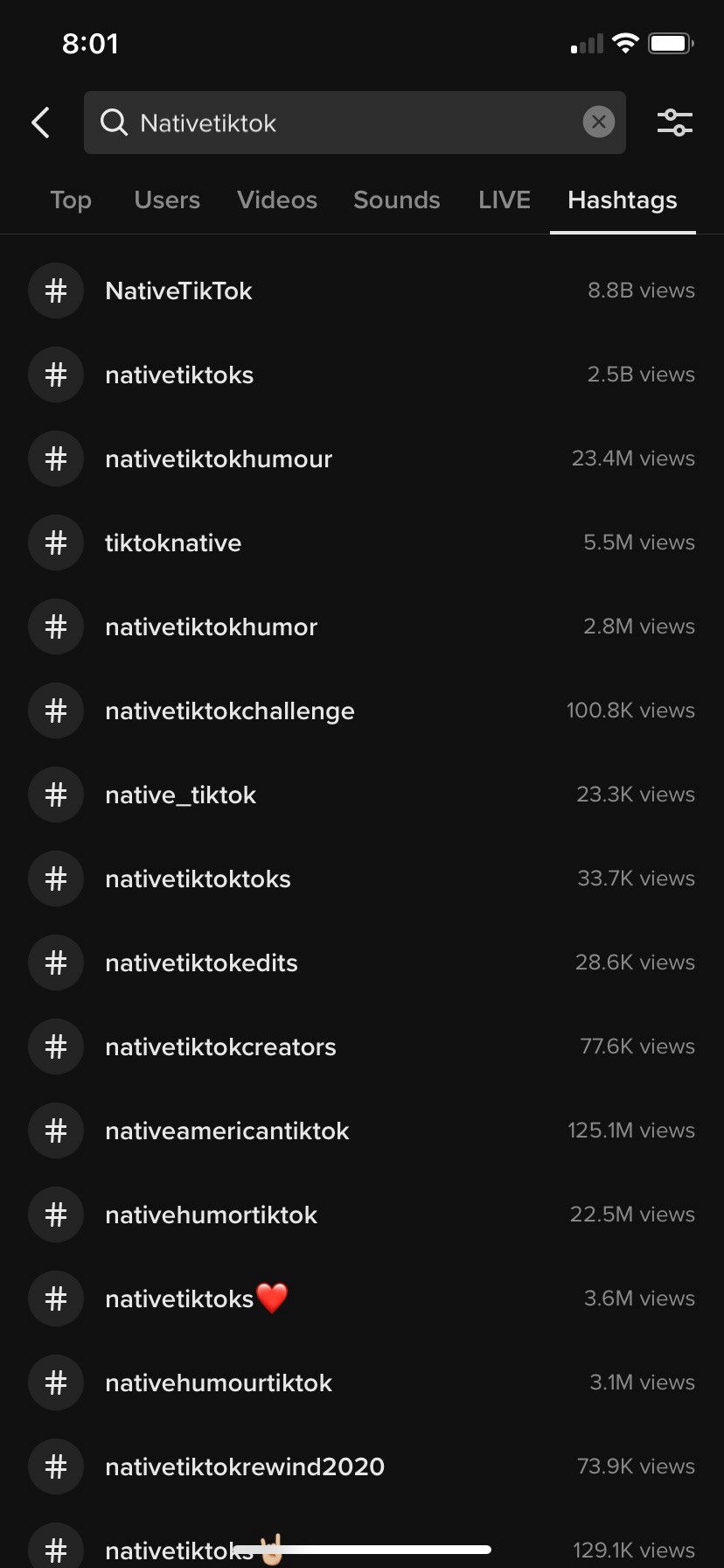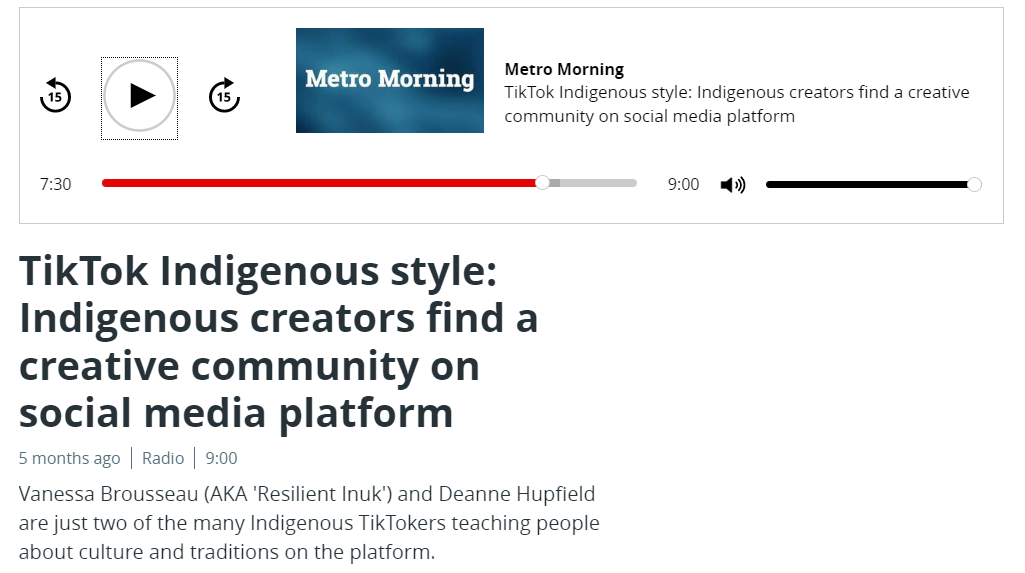Indigenous people’s use of digital technologies and social media provides them with a medium from which they can share their culture and their identity. By doing so, they combat long standing barriers to visibility. Therefore, I wanted to investigate what features of social media allow them to boost their visibility to larger audiences on these platforms. As I mentioned in my last blog post, a platform that prioritizes abundance and uses unbiased algorithms is a first step to increasing your visibility among users. Another way is through the use of hashtags. One such hashtag that is frequently used among Indigenous content creators and is boosting their visibility among each other and people outside of their culture is #NativeTikTok.

The use of hashtags on TikTok is easily viewable due to TikTok’s transparency with a lot of the data they collect. With a simple search in my own app, these are some of the statistics I found related to Indigenous based hashtags, and their views. Notice #NativeTikTok has 8.8 BILLION views!!

And as you can see, not only can I search for content that has used that hashtag, but I can also look at who is currently doing a LIVE video, I can listen to top trending sounds that are associated with that hashtag, I can watch videos that have used that hashtag, see users as well as the top trending content that has used that hashtag. This cache of content has been created by Indigenous people from all over the world, connecting them and creating a global community like never before. Not only do Indigenous people get to learn about their own cultures and traditions, but they get to learn about hundreds of other distinct native nations worldwide.
The act of being able to share their culture and some traditions, when before it was illegal to do so, is empowering. Having a tool like TikTok that allows Indigenous content creators to break the cycle of invisibility and to be known as contemporary, modern people, enables them to smash stereotypes in order to be truly seen as equal.

